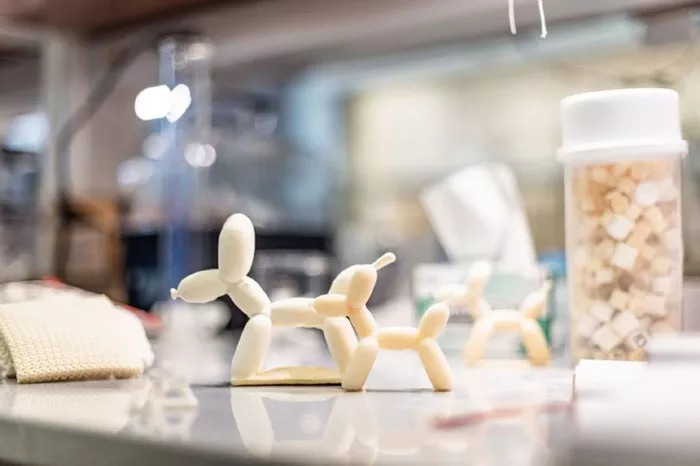Researchers at the University of Texas in Dallas have developed a new 3-D printed foam that is both stronger and more recyclable than traditional polymer foam used in many everyday products. Their findings, recently published in the Royal Society of Chemistry Journal RSC Applied Polymers, highlight the potential of this foam to change the way products are made.
The research team focused on creating a foam that is lightweight yet durable and can be 3-D printed. Rebecca Johnson, a doctoral student at UT Dallas and co-lead author of the study, explained that the project took over two years to complete. “It was a long process, mainly spent refining the polymer formulation to ensure it was compatible with 3-D printing,” Johnson said. “While creating materials that work with 3-D technology is tough, the printing process allowed us to design complex shapes that can be customized for different manufacturing needs.”
Dr. Ron Smaldone, associate professor of chemistry and biochemistry at the university and corresponding author of the study, discussed the project’s aim to address the challenges of 3-D printing with polymer foam. “One key interest in 3-D printable foams is their use in insulation and shock absorption,” he said. “With further research, this foam could be used in high-impact products like motorcycle helmets, football gear, car bumpers, and even armor.”
3-D printing also offers the advantage of creating intricate structures, like fine lattices, which can enhance the material’s physical flexibility and increase its potential applications.
The researchers also focused on making sure the foam could be 3-D printed into a consistent final product without defects. Unlike most commercial foams, which are thermoset and cannot be reshaped or recycled, this new foam is made with dynamic covalent chemistry. This allows the material to repair itself if damaged, extending its lifespan and making it more sustainable. Although it cannot be completely melted and reshaped like plastic, the foam’s unique bonds give it greater durability and versatility.
This breakthrough in foam technology could help reduce waste by creating products that last longer and can be recycled, offering a promising future for the manufacturing industry.

